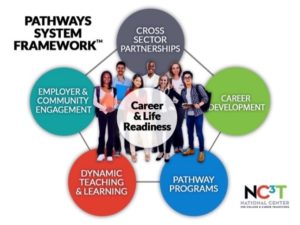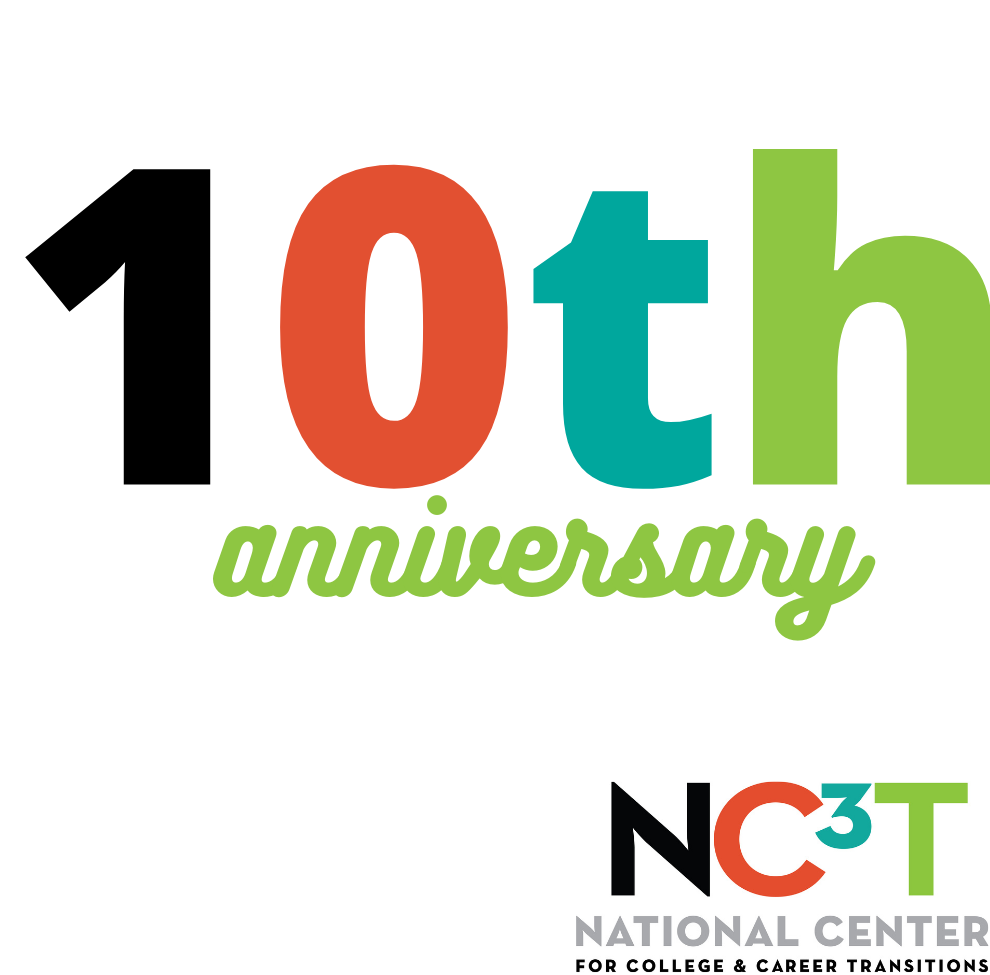No products in the cart.
Posts
How the Pathways System Framework Came to Be (and Using the New Self-Check Tool)
As NC3T celebrates its 10th anniversary, I wanted to reflect on the development of our Pathways System Framework.
As with any human endeavor, most good work is built on the work of those who came before us. That’s true of the Pathways System Framework, which took its current form in 2016.
There were three important influences on me in developing the Pathway System Framework. 
First, when I was working as the Deputy Assistant Secretary at the US Department of Education from 2001-2005, several organizations came together to create a shared definition of what a Career Academy is. While the Career Academy model was first developed in Philadelphia in the 1970s, several different organizations took the concept and ran with it, and by the early 2000s, many different models of education were being referred to as “career academies.” These groups, including the National Career Academy Coalition, agreed that there needed to be an “official” definition. The result of their deliberations is the National Standards of Practice (https://www.ncacinc.com/nsop). I studied these standards of practice as we were developing the Pathways Framework. Our framework draws upon many ideas from the standards but is slightly looser in defining the individual educational program, and also more expansive by looking at the whole school and/or district.
Secondly, I had been an admirer of the work of Dr. Gene Bottoms who founded the High Schools That Work initiative through the Southern Region Education Board. The High Schools That Work model is based on 10 Key Practices (https://www.sreb.org/post/high-schools-work). Shortly after departing the Department of Education in 2005, I was trained by SREB to lead site visit teams and participated in a few site visits. This gave me a deeper understanding of how the model integrated academic and curricular reforms and connected them to Career and Technical Education. Some of these ideas are reflected in the Pathways Framework.
Thirdly, I became connected with the Ford Motor Company Fund (https://www.fordfund.org/) and its effort to promote Career Academies, as well as Project-Based Learning. As a consultant with the Fund, we helped identify how these different efforts were inter-connected. My main takeaway from this was the importance of including teaching and learning as an identified component of the pathways model.
Through all these influences, I became convinced that pathways for all students was an important reform priority, and I wanted to be part of that work. That is when I teamed up with Brett Pawlowski, drawing upon his expertise in employer partnerships with education, to found NC3T in April 2012. Our mission was, and still is, to make Career-Connected Learning (and pathways) widely available through tools, technologies, professional development, and consulting.
Between 2012 and 2016, we carried out various consulting projects around career pathways and honed the framework. Then we formalized it in conjunction with the release of my book, The Power and Promise of Pathways, in Fall 2016.
There are six elements in the Pathways System Framework:
- Creating a profile of a graduate that articulates the career and life readiness knowledge, skills, and competencies that a student needs to be successful after school.
- Career development activities and experiences that range across K-12 education (and are closely linked with planning for postsecondary education).
- Career pathway programs of study that link between secondary and postsecondary education, and also link to academic content, and work-based learning experiences.
- Focus on high-quality instruction – dynamic teaching and learning.
- Engaging employers at a systems level and directly with students in career pathway programs and work-based learning activities.
- Cross-Sector Collaboration and Communication – creating partnership structures between K-12 education, postsecondary education, workforce development, and economic development.
In this post, we are sharing a new resource you can use — the Pathways System Implementation Self-Check Tool. The purpose of this tool is to help you quickly assess where your school or district is against each of the six components of a Pathways System Framework.
Using the Self-Check Tool
As you start working through the self-check tool, don’t be surprised to discover that your school or district might be very well developed in one or two of these areas, but not very far along in some of the other areas. Using this tool, you can do a quick analysis of what level your school and/or district is at for each of the six components. You can also identify where you would like to be in three years, and then in five years. Just follow the instructions at the top of the form. You can do it by yourself, but even better, invite your colleagues to use the tool on their own, and then get together, compare notes, and come to a consensus about where you are.
Each component is described in five levels of implementation, starting at Level 1 and moving up to Level 5. Level 5 is NOT necessarily where every team wants to end up. That’s absolutely ok. Most important is to plan for a challenging – but doable – pace of growth and movement from one level to another. This tool can help you begin envisioning the future of the pathways work in your school or district.
There is no right or wrong place to start. Most importantly take stock of where you are right now and begin to imagine where you could be in the coming years. As you are planning those next steps, don’t hesitate to check out our books, how-to guides, and web-based platforms to help you get there (https://nc3t.com/shop/, www.CareerSmartSchools.com, www.SeamlessWBL.com).
These tools and resources have been 10 years in the making, with more to come! A we envision a bright future; I want to again express my deep gratitude for the caring and visionary colleagues who laid the foundations that we all are building upon together!
Hans Meeder is President of the National Center for College and Career Transitions (NC3T) (www.nc3t.com). NC3T provides planning, coaching, technical assistance, and tools. These strategies help community-based leadership teams plan and implement their college-career pathway systems and strengthen employer connections with education.
Click the “Download Resource” button below to access the Pathways System Implementation Self-Check Tool!
Download Resource
